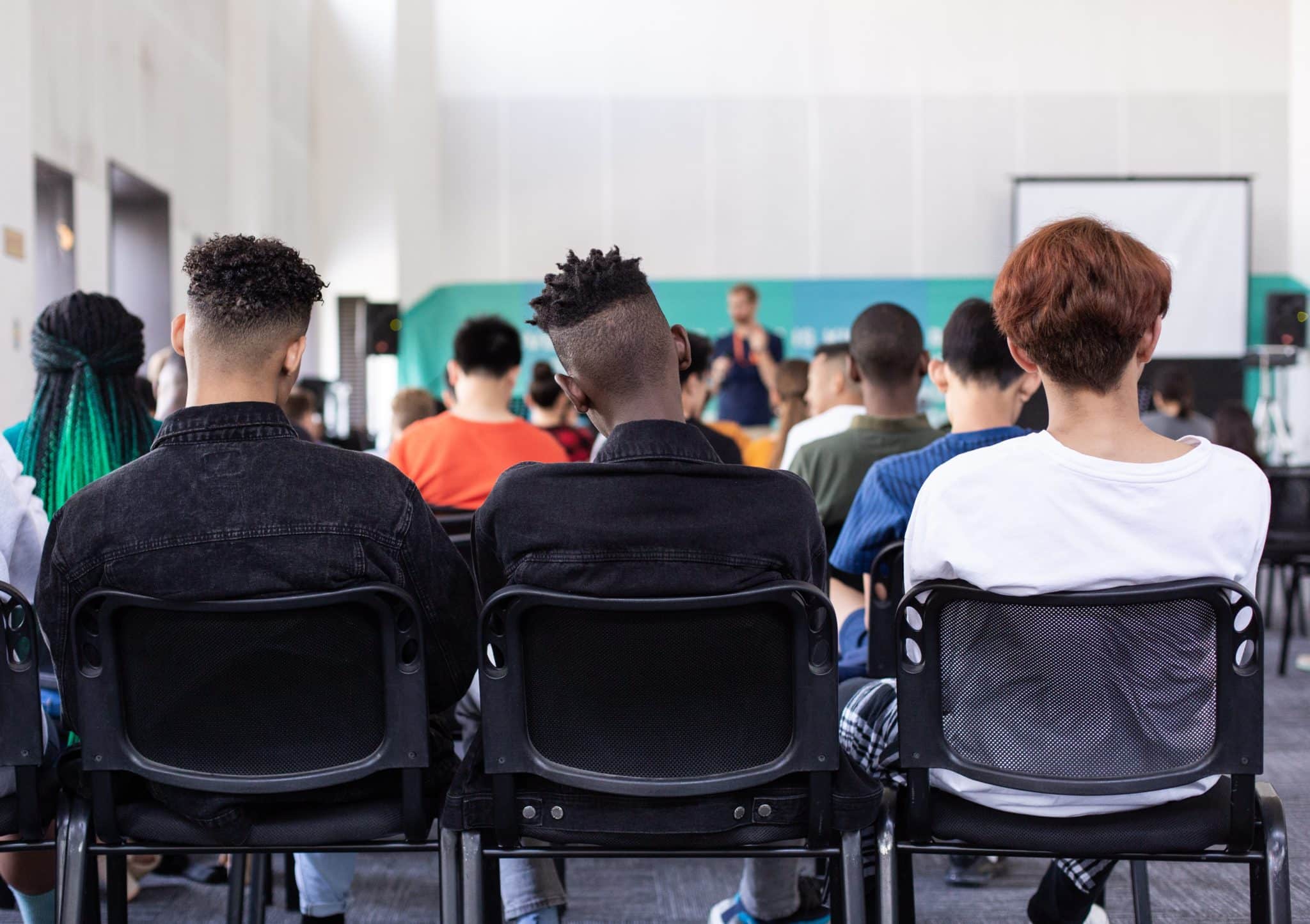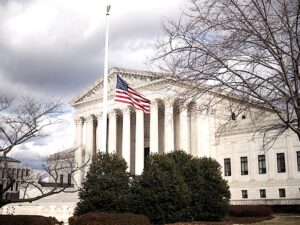It’s not enough to simply mention people of color in your lectures and station activities or stress the American ideals of equality and justice. Being an antiracist educator, especially one who teaches history, requires normalizing a whole new approach to the curriculum.
First, though, it’s important to note that antiracist isn’t a status achieved, but one that must be continually worked on since systemic racism has shaped all aspects of American society. I am white and I will never know what it’s like to be a person of color, but I also strive to be antiracist in my life and in my classroom.
Since 80% of America’s teachers are made up of just one race (White), it is paramount that we work to ensure all perspectives are included in the classroom and acknowledge the tough truths about racism, regardless of the demographics of our students, as well as instill a duty of social justice for ending racism and discrimination.
Now, more than ever, we are engaging in deep, emotional, and hopefully change-provoking conversations about race, both within our own circles and as a nation. And as educators, we are all essential in cultivating antiracist students. However, it is understandable to feel overwhelmed by all the work there is to be done. History textbooks and curricula of both the past and present have done a traditionally poor job of accurately or adequately including people who don’t look or think like their authors. While some improvements have been made in those areas, the best news for you is that there are plenty of alternative resources available now, especially via the Internet, that can help genuinely bridge that gap.
If you want help in facilitating class discussions about race, privilege, and discrimination, Teaching Tolerance has a fantastic free guide called Let’s Talk. In fact, their whole website is a great place to start for lesson plans and professional development on these topics.
Here, though, I want to provide 5 history class-specific action items that I’m working on as I continue on the journey to be a more conscientiously antiracist teacher. I’d love for you to join me in this urgently important work.
1. Check who the subject is
This one is the most paradigm-shifting, which means it may seem to be the most difficult. But that also means it’s the most important. So, let’s not shy away from it by listing it last and instead, let’s start here.
Look at your PowerPoint decks, your unit list of vocabulary terms, your graphic organizers, your textbook chapter titles. Who’s the central character? Who is the subject and who is the object of the story? Does the story take on an omnipresent narrator when things go racist?
Here are a few examples to get you thinking about your approaches to various events in US history.
Do you refer to the early 1800s as the Age of Jackson, inadvertently making the president the protagonist of the era?
Are the Cherokee referred to simply by a number of dead and displaced and circles on a map?
Flip the script and instead start with the Cherokee. Share about their culture and livelihood and their activism to fight their removal. Then bring in President Jackson’s unilaterally racist actions against them. It’s not enough to just have students dissect the racism in Jackson’s speeches because that still gives him the spotlight.
Is the Dred Scott case discussed as a legal debate, taught by analyzing excerpts of abstract arguments written by white men of power?
Turn the story around by reading the text of Mr. Scott’s suit that he issued to the courts. Make his courage and fight the center story instead.
Does the textbook discuss Emmett Till and the abstract “decision to” have an open casket funeral, without mentioning Mamie Till’s name?
Instead, share about her heart-wrenching tragedy and her painful choice to do the unexpected as a grieving mother because she hoped for a greater purpose to come out of her son’s torture. Honor the control she took at a moment when most would feel powerless.
2. Examine sources for greater purpose
As you include primary sources by activists and figures who are Black, indigenous, and other peoples of color in your units, challenge students to analyze their powerful persuasion techniques in addition to their message. This inherently gives their voice agency even if change didn’t immediate follow.
Frame Frederick Douglass’s “What to the Slave is the Fourth of July?” speech not just as a pointed question, but an effective appeal for whites to consider a different perspective.
Highlight W.E.B. Du Bois’ passion in addition to his points of disagreement in his often-read “Of Mr. Washington and Others” essay.
Show how Benjamin Banneker confidently calls out Thomas Jefferson in his famous letter for his hypocrisy with direct eloquence.
3. Include modern voices of activism
Each day, engaged Americans fill the editorial pages of our nation’s newspapers with their messages. These people don’t just have an impassioned and educated take on the issues of the day, but they nearly always make references back to historical events, enduring social issues, and founding American ideals.
Keep an eye on the opinion section and soon you will have plenty of essays to enrich your units. They work great to introduce or conclude your units, as well as to pair with primary sources in Socratic seminars and gallery walks. Editorials provide diverse perspectives and answer the perennial question “why study history?” for you, and they also normalize the idea that your students, too, can raise their voices by writing their own.
Here are just a few examples from the days after George Floyd’s death on Memorial Day, 2020.
Political scientist professor Dr. Melanye Price’s op-ed drawing parallels to Ida B. Wells, Emmett Till, and Rodney King.
The LA Times editorial board statement referencing the first amendment, DAPL protests, and Susan B. Anthony’s fight for the ballot.
Columnist Leonard Pitts, Jr.’s editorial making connections to a long list of Black civil rights activists.
Providing students these samples of eloquent and poignant free speech, especially those submitted by the public, is fundamental to nurturing their own sense of agency and empowerment. And, practically, it’s a perfect activism tool to study in a classroom setting. Read more about this and other great classroom-ready social justice projects in another blog post of mine.
4. Pick a new crush
We all know showing our quirky side is a great way to connect to our students. We have fun being that teacher with the bobblehead collection lining the shelves behind our desk. But take a deep look because who and what you show your affinity for matters.
Reflect on what underlying message your lighthearted personality streak could be sending. Are those figurines just of (white, male) presidents? How diverse are your nerdy history t-shirts or thick biographies displayed on your bookcase?
Imagine the message if you fiercely shared your admiration for the brilliance of Ida B. Wells or Daisy Bates or Cesar Chavez, and not just of your favorite president.
Imagine the message if the artwork on your classroom walls promoted abolition, grapes boycotts, and indigenous cultures, instead of only WWII propaganda posters or a Don’t Tread on Me flag, which promotes white-centered messages of patriotism. A few years ago, I realized I was totally guilty of having un-diverse decorations and have since made some swaps.
Details like these are powerful because their antiracist messages are coming from you, the person.
5. Never stop learning
Check out this great recommendation list for eye-opening and cause-for-reflection books on antiracism to help you on your journey. Additionally, examine the historical books and biographies you gravitate towards. Could your lineup include more people of color? To start, commit to reading one title you wouldn’t normally have picked. Or create a book study with colleagues or friends.
If time is limited, seek out other mediums. Listening to podcasts and following organizations on social media has allowed me to engage in ongoing learning and reflection as well as introduce me to new resources and upcoming events. Best of all, they show up automatically and ongoingly on my phone.
Here are a few of my favorites:
NPR’s Code Switch, an unpretentious podcast by NPR about race and identity in American culture.
Teaching While White, a podcast with intriguing conversations and practical tips to be antiracist in the classroom.
Teaching Hard History Podcast: American Slavery, a podcast by Teaching Tolerance specially for U.S. history teachers.
1619, a gripping series by the New York Times to mark the 400-year anniversary of American slavery.
Radical Imagination, a podcast this focuses on solutions to big problems, like racial and class inequalities.
Zinn Education Project: Instagram @zinneducationproject and Twitter @ZinnEdProject
Teaching Tolerance: Instagram @teaching_tolerance and Twitter @Tolerance_org
Facing History and Ourselves: Instagram @facinghistory and Twitter @facinghistory
I wrote this post in support of the Black Lives Matter movement and in acknowledgement that as educators we have an enormous share of influence on changing the attitudes our students carry and that we can never stop working to do right by them. But we can’t influence them to think differently until we do first. I hope these ideas have given you some doable action items, knowing that antiracism is an ongoing process.
You may find my other blog post, 5 Social Justice Projects That Will Empower Your Students, useful in incorporating totally doable, classroom-ready projects your students will love.
Feature image credit: Sam Balye





